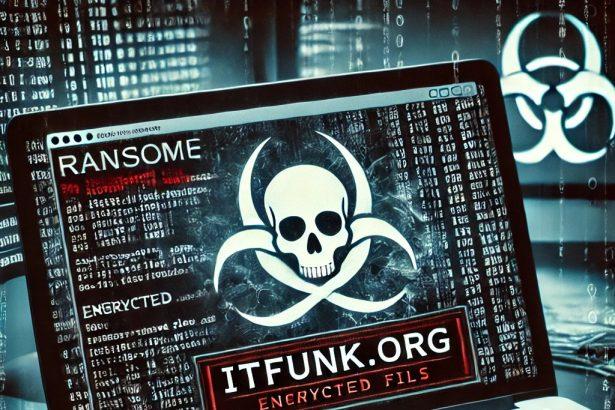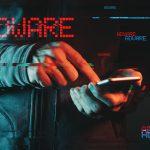Nanocrypt is a dangerous ransomware variant discovered during malware sample analysis on VirusTotal. Once executed on a victim’s device, it encrypts files using RSA/AES encryption algorithms and appends the “.ncrypt” extension to each file. Along with this, it drops a ransom note in a text file named “README.txt”, demanding $50 in Bitcoin in exchange for the decryption tool. Nanocrypt can severely compromise system stability and lead to irreversible data loss if not addressed quickly.
Nanocrypt Threat Summary
| Category | Details |
|---|---|
| Threat Name | Nanocrypt Virus |
| Threat Type | Ransomware, Crypto Virus, File Locker |
| Encrypted Extension | .ncrypt |
| Ransom Note File | README.txt |
| Ransom Amount | $50 in Bitcoin |
| Cybercriminal Contact | Discord: l_bozo2691 |
| Free Decryptor | No |
| Detection Names | Avast: Win32:MalwareX-gen [Trj] Combo Cleaner: Generic.Ransom.Hiddentear.A.627D7478 ESET-NOD32: A Variant Of Generik.MZRPJQN Kaspersky: HEUR:Trojan-Ransom.MSIL.Crypren.gen Microsoft: Program:Win32/Wacapew.C!ml |
| Symptoms | Files renamed with .ncrypt, ransom note shown, system slowdown |
| Distribution Methods | Infected email attachments, torrent sites, malicious ads, P2P software |
| Damage Level | Severe – permanent file loss, system damage, potential MBR corruption |
Nanocrypt Ransom Note (“README.txt”)
vbnetCopyEditYOUR FILES HAVE BEEN ENCRYPTED BY NANOCRYPT RANSOMWARE
----WHAT HAPPENED TO MY FILES?----
Your files have been put through an RSA/AES encryption method. This means all your files will be inaccessible.
----WHAT DO I DO?----
1. Purchase 50 USD worth of bitcoin.
2. Send the bitcoin to this address:
3. You will be sent a decrypter that will restore access to all your files.
----WHAT NOT TO DO----
1. Do not restart your computer.
1a. Your MBR (Master Boot Record) has been corrupted meaning you won't be able to boot back into windows.
2. Looking for a way to decrypt all your files on your own.
2a. Your files have been put through an RSA/AES encryption method you won’t be able to recover them without our decrypter program.
3. Messing with encrypted files.
3a. Doing things such as: opening and renaming files might cause permanent data loss even with our decrypter program.
4. Not paying.
4a. You will have only 3 days to pay us the bitcoin or your computer will be automatically restarted causing your system to be bricked.
----GOT ANY MORE QUESTIONS?----
If you have any more questions please contact 'l_bozo2691' on the discord platform we will answer any other questions that you may have.
Manual Ransomware Removal Guide
Warning: Manual removal is complex and risky. If not done correctly, it can lead to data loss or incomplete removal of ransomware. Only follow this method if you are an advanced user. If unsure, proceed with Method 2 (SpyHunter Removal Guide).
Step 1: Disconnect from the Internet
- Unplug your Ethernet cable or disconnect Wi-Fi immediately to prevent further communication with the ransomware’s command and control (C2) servers.
Step 2: Boot into Safe Mode
For Windows Users:
- For Windows 10, 11:
- Press Windows + R, type
msconfig, and hit Enter. - Go to the Boot tab.
- Check Safe boot and select Network.
- Click Apply and OK, then restart your PC.
- Press Windows + R, type
- For Windows 7, 8:
- Restart your PC and press F8 repeatedly before Windows loads.
- Select Safe Mode with Networking and press Enter.
For Mac Users:
- Restart your Mac and immediately press and hold the Shift key.
- Release the key once you see the Apple logo.
- Your Mac will start in Safe Mode.
Step 3: Locate and Terminate Malicious Processes
For Windows Users:
- Press Ctrl + Shift + Esc to open Task Manager.
- Look for suspicious processes (e.g., unknown names, high CPU usage, or random letters).
- Right-click on the process and select End Task.
For Mac Users:
- Open Activity Monitor (Finder > Applications > Utilities > Activity Monitor).
- Look for unusual processes.
- Select the process and click Force Quit.
Step 4: Delete Malicious Files
For Windows Users:
- Press Windows + R, type
%temp%, and hit Enter. - Delete all files in the Temp folder.
- Navigate to:
C:\Users\[Your Username]\AppData\RoamingC:\Users\[Your Username]\AppData\LocalC:\Windows\System32
- Look for suspicious files related to the ransomware (random file names, recently modified) and delete them.
For Mac Users:
- Open Finder and go to Go > Go to Folder.
- Type
~/Library/Application Supportand delete suspicious folders. - Navigate to
~/Library/LaunchAgentsand remove unknown.plistfiles.
Step 5: Remove Ransomware from Registry or System Settings
For Windows Users:
Warning: Incorrect changes in the Registry Editor can damage your system. Proceed with caution.
- Press Windows + R, type
regedit, and hit Enter. - Navigate to:
HKEY_CURRENT_USER\SoftwareHKEY_LOCAL_MACHINE\Software
- Look for unfamiliar folders with random characters or ransomware-related names.
- Right-click and select Delete.
For Mac Users:
- Go to System Preferences > Users & Groups.
- Click on Login Items and remove any suspicious startup items.
- Navigate to
~/Library/Preferencesand remove malicious.plistfiles.
Step 6: Restore System Using System Restore (Windows) or Time Machine (Mac)
For Windows Users:
- Press Windows + R, type
rstrui, and hit Enter. - Click Next, choose a restore point before the infection, and follow the prompts to restore your system.
For Mac Users:
- Restart your Mac and hold Command + R to enter macOS Utilities.
- Select Restore from Time Machine Backup.
- Choose a backup prior to the ransomware infection and restore your system.
Step 7: Use a Decryption Tool (If Available)
- Visit No More Ransom (www.nomoreransom.org) and check if a decryption tool is available for your ransomware variant.
Step 8: Recover Files Using Backup
- If you have backups on an external drive or cloud storage, restore your files.
Automatic Ransomware Removal Using SpyHunter
If manual removal seems too risky or complicated, using a reliable anti-malware tool like SpyHunter is the best alternative.
Step 1: Download SpyHunter
Download SpyHunter from the official link: Download SpyHunter
Or follow the official installation instructions here:
SpyHunter Download Instructions
Step 2: Install SpyHunter
- Open the downloaded file (
SpyHunter-Installer.exe). - Follow the on-screen prompts to install the program.
- Once installed, launch SpyHunter.
Step 3: Perform a Full System Scan
- Click on Start Scan Now.
- SpyHunter will scan for ransomware and other malware.
- Wait for the scan to complete.
Step 4: Remove Detected Threats
- After the scan, SpyHunter will list all detected threats.
- Click Fix Threats to remove the ransomware.
Step 5: Use SpyHunter’s Malware HelpDesk (If Needed)
If you are dealing with a stubborn ransomware variant, SpyHunter’s Malware HelpDesk provides custom fixes to remove advanced threats.
Step 6: Restore Your Files
If your files are encrypted:
- Try No More Ransom (www.nomoreransom.org) for decryption tools.
- Restore from cloud storage or external backups.
Preventing Future Ransomware Attacks
- Keep backups on an external hard drive or cloud storage.
- Use SpyHunter to detect threats before they infect your system.
- Enable Windows Defender or a trusted antivirus program.
- Avoid suspicious emails, attachments, and links.
- Update Windows, macOS & software regularly.
Conclusion
Nanocrypt ransomware is a highly dangerous threat designed to encrypt victims’ files and extort payment. While the ransom demand may appear low, paying does not guarantee decryption and encourages criminal behavior. Victims should immediately remove the malware using legitimate tools and avoid any further interaction with the attackers. Prevention, regular backups, and cybersecurity awareness are the strongest defenses against threats like Nanocrypt.




